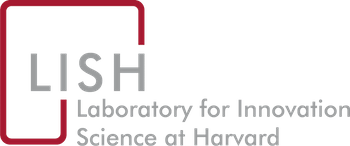Raymond H. Mak, Michael G. Endres, Jin H. Paik, Rinat A. Sergeev, Hugo Aerts, Christopher L. Williams, Karim R. Lakhani, and Eva C. Guinan. 4/18/2019. “
Use of Crowd Innovation to Develop an Artificial Intelligence–Based Solution for Radiation Therapy Targeting.” JAMA Oncology, 5, 5, Pp. 654-661.
Publisher's VersionAbstractRadiation therapy (RT) is a critical cancer treatment, but the existing radiation oncologist work force does not meet growing global demand. One key physician task in RT planning involves tumor segmentation for targeting, which requires substantial training and is subject to significant interobserver variation.
To determine whether crowd innovation could be used to rapidly produce artificial intelligence (AI) solutions that replicate the accuracy of an expert radiation oncologist in segmenting lung tumors for RT targeting.
We conducted a 10-week, prize-based, online, 3-phase challenge (prizes totaled $55 000). A well-curated data set, including computed tomographic (CT) scans and lung tumor segmentations generated by an expert for clinical care, was used for the contest (CT scans from 461 patients; median 157 images per scan; 77 942 images in total; 8144 images with tumor present). Contestants were provided a training set of 229 CT scans with accompanying expert contours to develop their algorithms and given feedback on their performance throughout the contest, including from the expert clinician.
Main Outcomes and Measures The AI algorithms generated by contestants were automatically scored on an independent data set that was withheld from contestants, and performance ranked using quantitative metrics that evaluated overlap of each algorithm’s automated segmentations with the expert’s segmentations. Performance was further benchmarked against human expert interobserver and intraobserver variation.
A total of 564 contestants from 62 countries registered for this challenge, and 34 (6%) submitted algorithms. The automated segmentations produced by the top 5 AI algorithms, when combined using an ensemble model, had an accuracy (Dice coefficient = 0.79) that was within the benchmark of mean interobserver variation measured between 6 human experts. For phase 1, the top 7 algorithms had average custom segmentation scores (S scores) on the holdout data set ranging from 0.15 to 0.38, and suboptimal performance using relative measures of error. The average S scores for phase 2 increased to 0.53 to 0.57, with a similar improvement in other performance metrics. In phase 3, performance of the top algorithm increased by an additional 9%. Combining the top 5 algorithms from phase 2 and phase 3 using an ensemble model, yielded an additional 9% to 12% improvement in performance with a final S score reaching 0.68.
A combined crowd innovation and AI approach rapidly produced automated algorithms that replicated the skills of a highly trained physician for a critical task in radiation therapy. These AI algorithms could improve cancer care globally by transferring the skills of expert clinicians to under-resourced health care settings.
